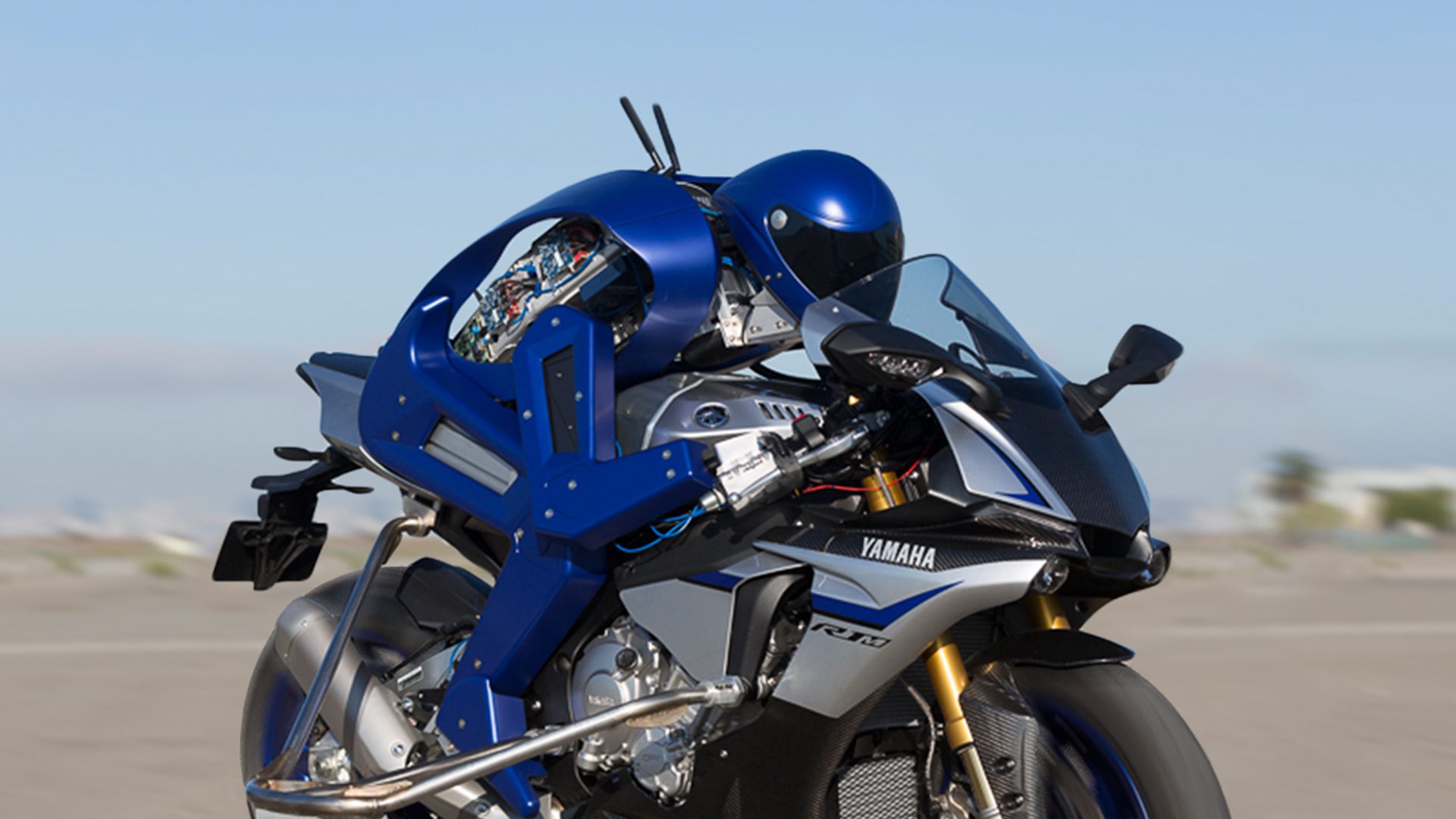Can state of the art AI technology and a team of world-class Silicon Valley engineers beat one of the best motorcycle racers in the world?
CHALLENGE AND GOAL
Motorcycle safety is a complicated field and it’s difficult to gather objective data on vehicle behavior at the limits of performance without risking the life of a test-rider. In order to create the next generation of rider safety assist, Yamaha Motor Ventures & Laboratory Silicon Valley turned to the researchers at SRI International.
SOLUTION
SRI researchers working alongside Yamaha engineers created MOTOBOT, the world’s first autonomous motorcycle-riding humanoid robot designed not just to look like, but to ride like a person. MOTOBOT was created to aid the development of future motorcycles, improve motorcycle safety, and in the process, achieve record lap times.

Can a motorcycle-riding robot outperform the best human riders on the racetrack? That’s one of the questions researchers at Yamaha Motor Ventures & Laboratory Silicon Valley set out to answer when they teamed up with SRI to develop an autonomous motorcycle-riding humanoid robot known as MOTOBOT.
MOTOBOT is designed to ride an unmodified Yamaha YZF-R1M, the fastest street-legal bike offered by Yamaha. By combining the MOTOBOT hardware, the motorcycle, and real-time computer simulation, the team was able to safely test and refine the system. Every few weeks, MOTOBOT was taken to the racetrack for days of extensive field testing.
MOTOBOT achieved speeds exceeding 200km/h (124 mph) and raced more than 1500 miles on the twisting Thunderhill racetrack, relying entirely on its sensors and calculated racing line. The team challenged champion MotoGP racer Valentino Rossi to a time-trial. Both raced identical bikes on the same track. In the end, MOTOBOT never matched the record time set by Rossi, but Yamaha learned a tremendous amount in the process.
Although you aren’t likely to see MOTOBOT crossing the finish line in any upcoming Grand Prix Motorcycle tournaments, the technology is making it possible for researchers to better understand how proper rider reaction can help maintain control in extreme situations, and how new safety systems can protect the less experienced rider from improper actions.
This enables them to further quantify the relationship between rider input and machine behavior, and to leverage the resulting know-how to build even better vehicles.



